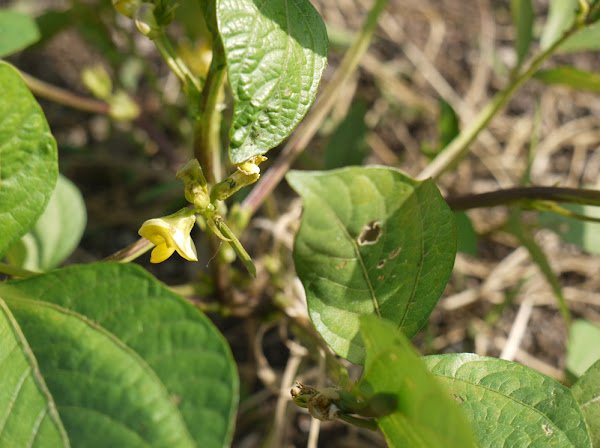In India, urad dal, or black gram, is a significant pulse crop. It offers important nutrients and protein. Black gram requires organised control and planning throughout cultivation. You have to first understand the ideal soil and climate factors. Healthy development is also supported by appropriate soil preparation and planting techniques.
High yields also depend on efficient pest and irrigation control. Ultimately, the highest quality pulse may be obtained through timely harvesting.
This blog will take you step-by-step through the black gram production process and provide helpful agricultural advice.
Climate Requirements
Warm, humid temperatures are the best for the growth of black gram. Between 25 and 35°C is the optimum temperature range. Additionally, it grows well in areas with 600–800 mm of moderate rainfall annually. However, the crop might get damaged by excessive rain.
A frost-free climate is necessary for black gram since it is sensitive to frost. In Kharif, when the monsoon is in full swing, it grows well. In general, the cultivation of this crop requires a healthy balance between temperature, moisture, and good drainage.
Soil Conditions
Good drainage is necessary for the growth of black gram in loamy or clayey soils. It favours soils that range in pH from 6.5 to 7.5. But it can also survive in soils that are quite acidic. Moreover, better growth requires a high organic matter content in the soil.
One way to increase soil fertility is by adding manure or compost. Black gram may grow on poor soils, although yields may be lower. Overall, healthy and fruitful black gram farming requires rich, well-drained soils.
Different Types of Varieties
Many popular types of black gram are available in different locations. T-9 is a good-yielding early maturing variety. PDU-1 is popular for its pest and disease resistance. Another high-yielding type that is extensively planted throughout India is IPU-94-1.
Certain varieties, notably Pant Urd-19, grow well in regions that are prone to drought. However, LBG-20 grows more effectively in areas with enough rainfall. Farmers can pick a variety according to the conditions and needs they have in mind since each one has various benefits to provide.
Land Preparation
Proper land preparation is necessary for black gram farming. To loosen the soil, first, plough the land two or three times. Next, level the ground and break up any chunks using a tractor or harrow. You can use Solis 5724 S 4WD for this process because this tractor comes with a 57 HP engine. This powerful engine is capable of churning soil effectively, and its power steering doesn’t let you feel tired. Moreover, the Solis 5724 S 4WD price is reasonable, which makes it a better option for farmers.
At this point, adding organic manure enhances soil fertility. Make sure the field has enough drainage after levelling to prevent waterlogging. Additionally, ridges or furrows can help with irrigation. Finally, before planting the seeds for better development, ensure that the soil is clear of weeds.
Sowing Process
Black gram should be sown at the appropriate period, which is often in June or July. In order to avoid infections, first treat seedlings with fungicide. Subsequently, plant the seeds 4-5 cm deep. Keep your rows and plants spaced 30 cm apart and 10 cm apart, respectively.
In doing so, you may prevent overcrowding and promote healthy plant growth. To promote greater germination, make sure the soil is wet when you seed it. In order to get a more uniform dispersion, utilise a seed drill.
Irrigation
Though timing is important, black gram requires very little watering. Water the crop as soon as it is sown first. After that, water your plants while they’re at major growth phases like blooming and pod filling. Depending on the amount of rain, black gram usually requires two to three irrigations. However, waterlogging should be prevented, as this might harm the crop. In order to avoid root rot, proper drainage is necessary.
Drip irrigation is an effective way to save water while it’s dry outside. Lastly, to give the pods time to develop, stop watering one week before harvesting.
Pest Management
Healthy black gram crops depend on effective pest management. To start, keep an eye on fields regularly to spot pests early. Plant-harming pests like aphids and pod borers are common. Use biological techniques to control them, such as releasing natural predators. Alternatively, chemical pesticides should be applied carefully and in line with instructions.
Reducing pest attacks also involves crop rotation and upholding field cleanliness. Additionally, using pest-resistant varieties might provide further protection. Lastly, all infected plants must be removed quickly to stop pests from spreading.
Harvesting
When 80% of the pods become black, black gram harvesting should start. First, use sickles or harvesters to cut the plants carefully. After that, give the plants a few days in the field to dry off. To extract the seeds, thresh the pods after drying.
Use traditional techniques for smaller fields or a threshing machine for larger ones. After cleaning, place the seeds in a dry, cold location. Better quality and larger harvests are guaranteed by proper harvesting. You can use Mahindra 585 DI XP Plus to transport the crops. This tractor has a 49 HP, 4-cylinder engine and 1800 kg lifting capacity, which can easily carry lots of crops. If you want to buy this tractor, you can check the Mahindra 585 price on the Tractor Junction website.
Conclusion
As a valuable crop, black gram need particular conditions to develop to their full potential. You can guarantee a good crop by knowing the perfect temperature and soil conditions. High yields need careful ground preparation, planting, and watering. Timely harvesting and efficient pest control enhance quality even further.
In general, you get greater outcomes when you follow these tips. Use the equipment and types that are advised as part of best practices. It is possible to have a successful black gram farming experience with cautious preparation.



